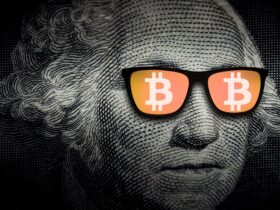Bitcoin is a decentralized digital currency that operates without the need for a central bank or administrator. It was created in 2009 by an unknown person or group of people who went by the pseudonym “Satoshi Nakamoto.” Since then, it has become one of the most popular forms of cryptocurrency.
The basic concept behind Bitcoin is that it is a digital currency that can be used for transactions online, without the need for intermediaries like banks or credit card companies. Instead, Bitcoin uses a decentralized network of users to verify and record transactions.
So, how does Bitcoin actually work? Let’s break it down into a few key components.
The Blockchain
At the heart of the Bitcoin network is the blockchain. The blockchain is essentially a digital ledger that records all Bitcoin transactions. Every time a Bitcoin transaction is made, it is added to the blockchain, which is essentially a long list of every single Bitcoin transaction that has ever occurred.
The blockchain is maintained by a network of users, who are incentivized to participate in the network by earning Bitcoins for verifying transactions. This is done through a process called mining, which we’ll discuss in more detail later.
Bitcoin Wallets
In order to use Bitcoin, you need a Bitcoin wallet. A Bitcoin wallet is essentially a digital wallet that holds your Bitcoins. It’s like a bank account for Bitcoin.
There are many different types of Bitcoin wallets available, ranging from desktop wallets to mobile wallets to hardware wallets. Each type of wallet has its own unique features and benefits, but they all serve the same basic function of holding your Bitcoins and allowing you to send and receive them.
Transactions
When you want to send Bitcoins to someone else, you initiate a transaction. This transaction is then broadcast to the Bitcoin network, where it is verified and recorded on the blockchain.
Transactions are verified by a network of users called nodes, who use complex algorithms to ensure that the transaction is legitimate. Once the transaction is verified, it is added to the blockchain and the recipient receives the Bitcoins.
Mining
Mining is the process by which new Bitcoins are created and added to the blockchain. It’s also the process by which transactions are verified and recorded on the blockchain.
Mining involves using powerful computers to solve complex mathematical equations. When a miner successfully solves an equation, they are rewarded with a certain number of Bitcoins. This incentivizes miners to continue to participate in the network and maintain the blockchain.
Supply and Demand
Like any currency, the value of Bitcoin is determined by supply and demand. The more people that want to buy Bitcoin, the higher the price will be. The fewer people that want to buy Bitcoin, the lower the price will be.
Bitcoin’s supply is limited to 21 million coins, which means that it is a deflationary currency. This means that over time, the value of each Bitcoin is likely to increase as the supply dwindles and demand increases.
Bitcoin is a decentralized digital currency that operates without the need for intermediaries like banks or credit card companies. It is maintained by a network of users who verify and record transactions on the blockchain. Bitcoin’s value is determined by supply and demand, and its supply is limited to 21 million coins. While Bitcoin can be a volatile investment, it has also revolutionized the way we think about money and the way we transact online.












Leave a Reply